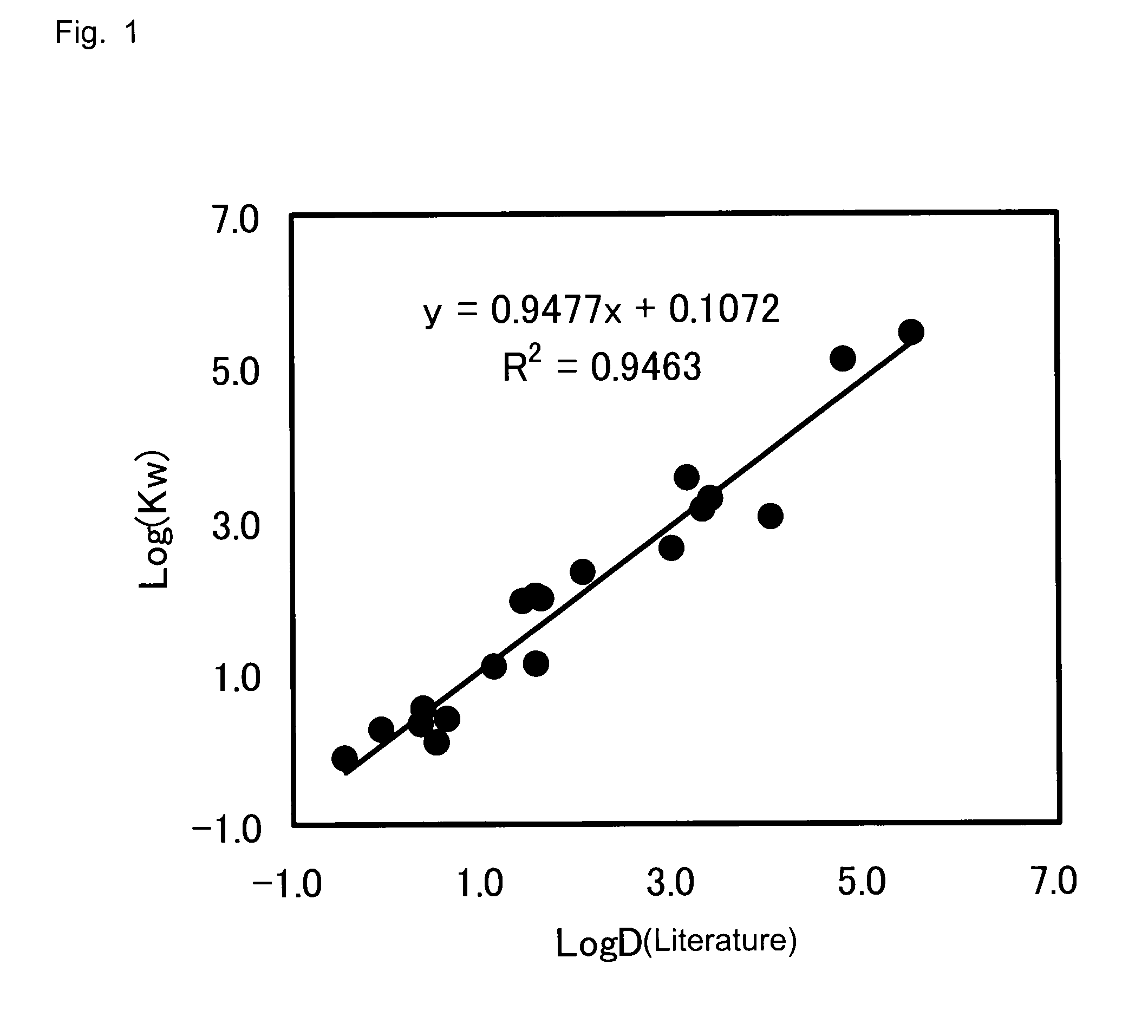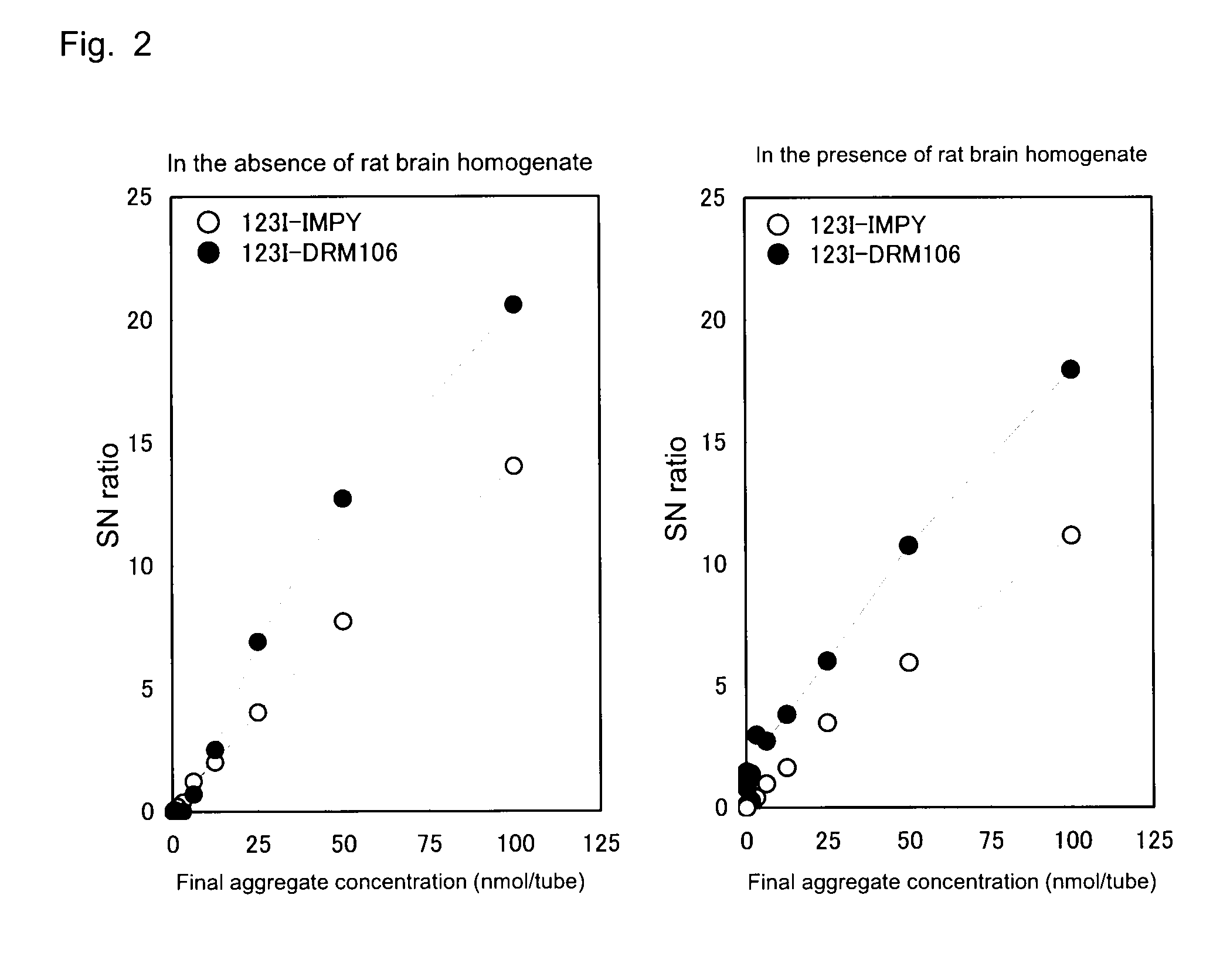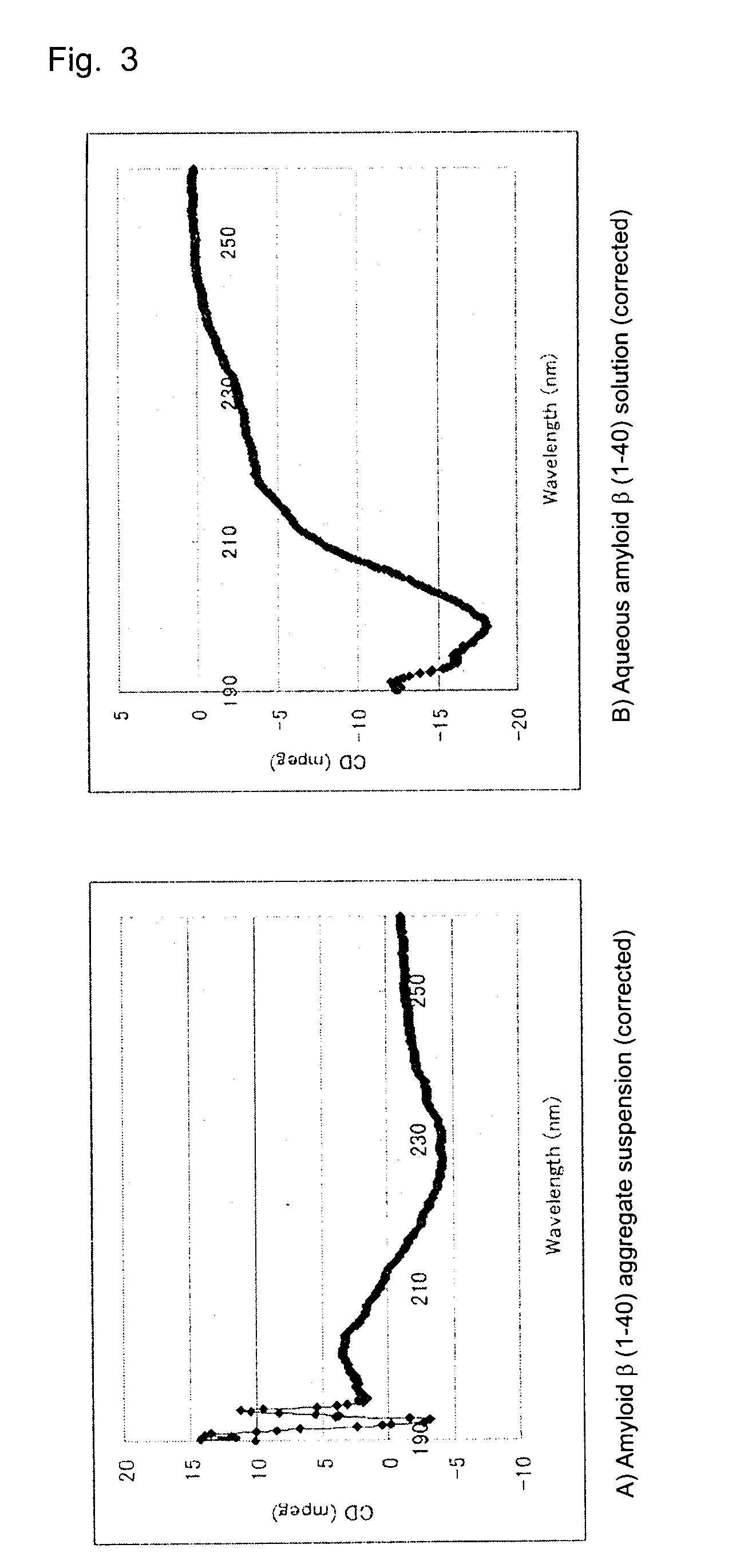Diagnostic and remedy for disease caused by amyloid aggregation and/or deposition
a technology of amyloid aggregation and amyloid deposition, which is applied in the direction of drug composition, metabolic disorder, drug composition, etc., can solve the problems of limited diagnosis of disease, high invasive test, and low amyloid aggregation affinity, and achieve high amyloid aggregation affinity, high safety, and high stability in biological bodies
- Summary
- Abstract
- Description
- Claims
- Application Information
AI Technical Summary
Benefits of technology
Problems solved by technology
Method used
Image
Examples
referential example 1
4-(6-Iodoimidazo[1,2-a]pyridin-2-yl)benzonitrile (1)
[0102]2-Amino-5-iodopyridine (1.0 g) and 2-bromo-4′-cyanoacetophenone (1.02 g) were dissolved in ethanol (30 mL), and sodium hydrogencarbonate (382 mg) was added to the solution, followed by refluxing for 16 hours. Water (10 mL) was added to the reaction mixture, and the mixture was left to cool. The precipitated matter was recovered through filtration and dried, to thereby yield the title compound g).
[0103]1H-NMR (400 MHz, DMSO-d6) δ:7.54 (1H, d, J=9.5 Hz), 7.62 (1H, dd, J=1.2, 9.3 Hz), 7.94 (2H, d, J=8.3 Hz), 8.14 (2H, d, J=8.5 Hz), 8.56 (1H, s), 9.02 (1H, s). EI-MS m / z: 345 (M)+.
referential example 2
4-(6-Iodoimidazo[1,2-a]pyridin-2-yl)benzaldehyde (2)
[0104]4-(6-Iodoimidazo[1,2-a]pyridin-2-yl)benzonitrile (1.27 g) was added to a mixture of tetrahydrofuran (15 mL) and dichloromethane (15 mL), followed by stirring under ice cooling. Diisobutylaluminum hydride (7.8 mL) was added dropwise to the reaction mixture, and the resultant mixture was stirred at the same temperature for 15 minutes and then at room temperature for 4 hours. Aqueous saturated ammonium chloride solution (2 mL) was added dropwise to the reaction mixture, followed by stirring at room temperature for 1 hour. Subsequently, magnesium sulfate and diethyl ether were added to the reaction mixture, followed by further stirring for 1 hour. The solvent was evaporated, and the residue was purified through silica gel column chromatography (dichloromethane:methanol=95:5). The purified product was concentrated under reduced pressure, to thereby yield the title compound (1.03 g).
[0105]1H-NMR (400 MHz, DMSO-d6) δ:7.47 (2H, d, J=...
example 1
5-[4-(6-Iodoimidazo[1,2-a]pyridin-2-yl)phenyl]-1,3-oxazole (3)
[0106]4-(6-Iodoimidazo[1,2-a]pyridin-2-yl)benzaldehyde (647 mg) and p-toluenesulfonylmethyl isocyanide (454 mg) were dissolved in methanol (10 mL), and potassium carbonate (321 mg) was added to the solution at room temperature, followed by refluxing for 13 hours. The precipitated product was recovered through filtration and dried, to thereby yield the title compound (330 mg).
[0107]1H-NMR (400 MHz, DMSO-d6) δ:7.45 (2H, d, J=1.2 Hz), 7.74 (1H, s), 7.81 (2H, d, J=8.5 Hz), 8.06 (2H, d, J=8.5 Hz), 8.39 (1H, s), 8.47 (1H, s), 8.92 (1H, t, J=1.2 Hz). EI-MS m / z: 387 (M)+.
PUM
| Property | Measurement | Unit |
|---|---|---|
| width | aaaaa | aaaaa |
| survival time | aaaaa | aaaaa |
| molecular weight | aaaaa | aaaaa |
Abstract
Description
Claims
Application Information
 Login to View More
Login to View More - R&D
- Intellectual Property
- Life Sciences
- Materials
- Tech Scout
- Unparalleled Data Quality
- Higher Quality Content
- 60% Fewer Hallucinations
Browse by: Latest US Patents, China's latest patents, Technical Efficacy Thesaurus, Application Domain, Technology Topic, Popular Technical Reports.
© 2025 PatSnap. All rights reserved.Legal|Privacy policy|Modern Slavery Act Transparency Statement|Sitemap|About US| Contact US: help@patsnap.com



